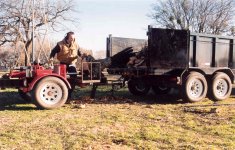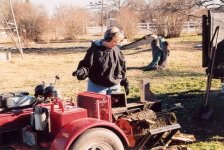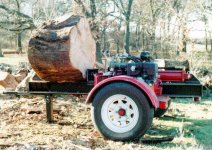1962
Silver Member
After watching a guy run a timberwolf splitter with a log lift attachment, I knew that I needed one. I picked up the square tubing at the steel supply house and some plate for gussets(man are those prices high). I have a used 2"x 8" stroke cylinder, but my knowledge on mounting pivoting cylinders is nill.
If the 8" stroke is not long enough, I'll get a 12".
Also I want to run this off the hydraulics of my home made 11hp splitter. Besides needing a 4 way valve and hoses, what do I need to get to run two circuits off one pump? And how to slow down the flow to control the small cylinder speed, and leave the 4" cylinder unaffected.
Any input would be greatly appreciated.
If the 8" stroke is not long enough, I'll get a 12".
Also I want to run this off the hydraulics of my home made 11hp splitter. Besides needing a 4 way valve and hoses, what do I need to get to run two circuits off one pump? And how to slow down the flow to control the small cylinder speed, and leave the 4" cylinder unaffected.
Any input would be greatly appreciated.



